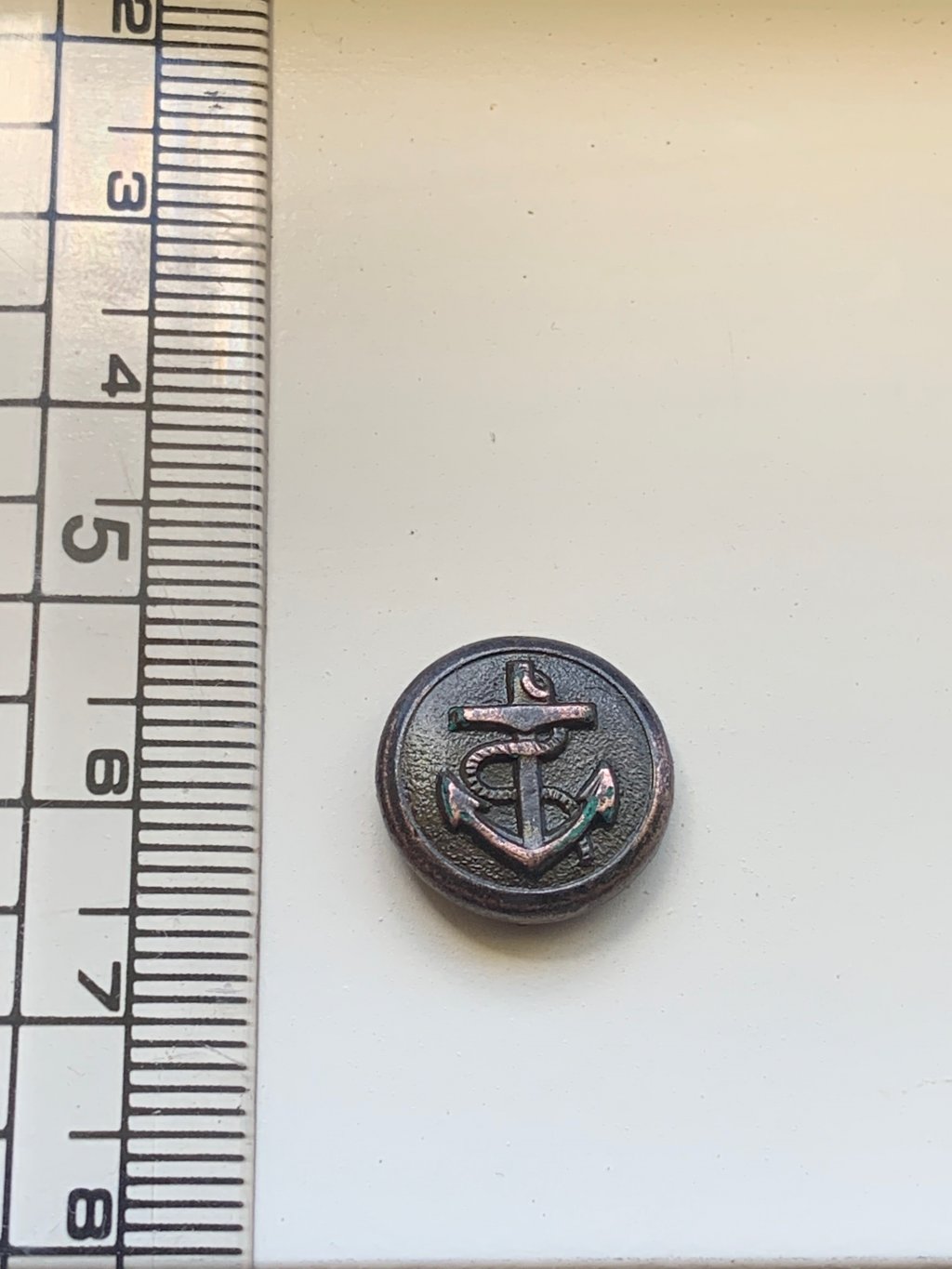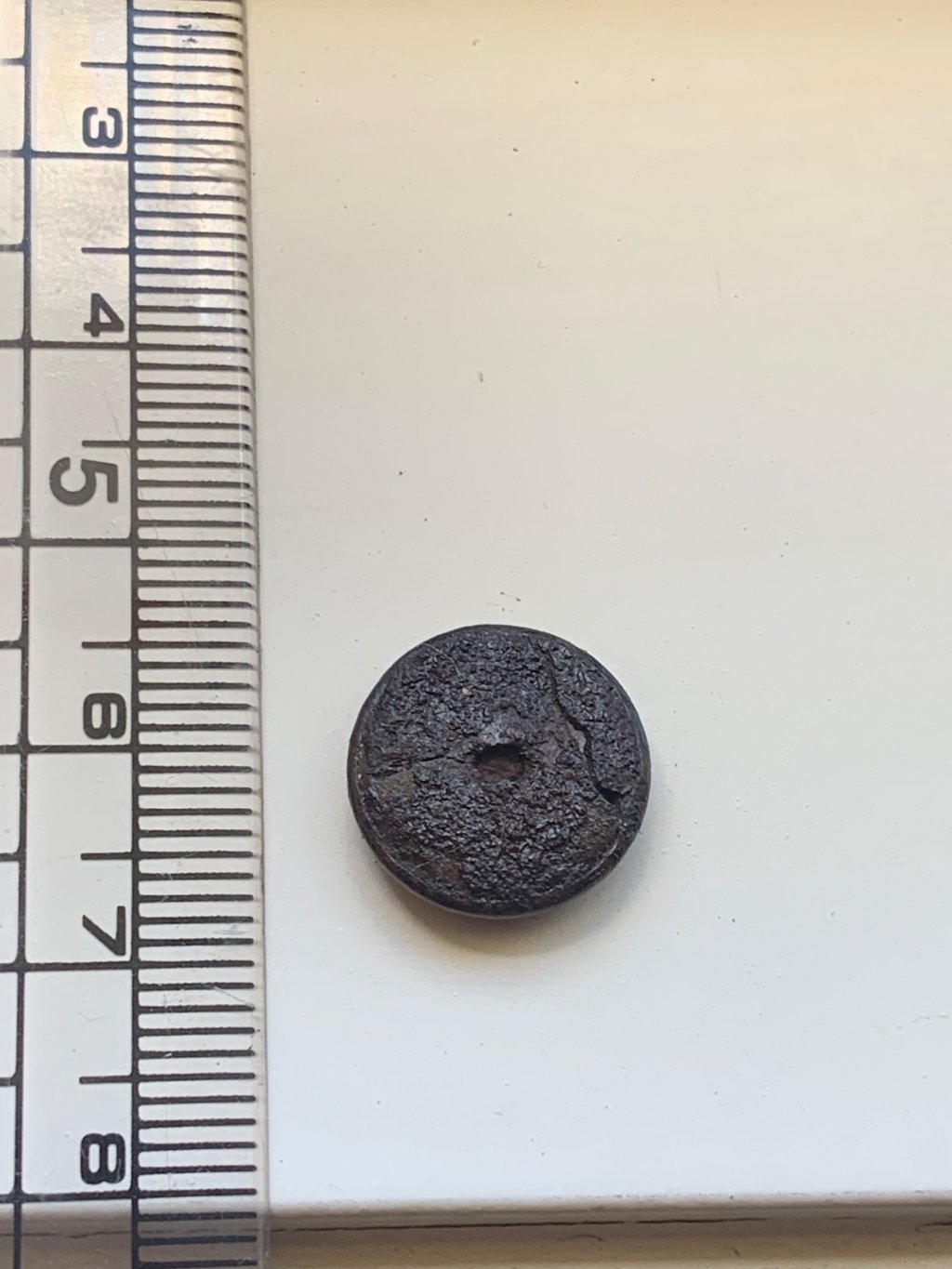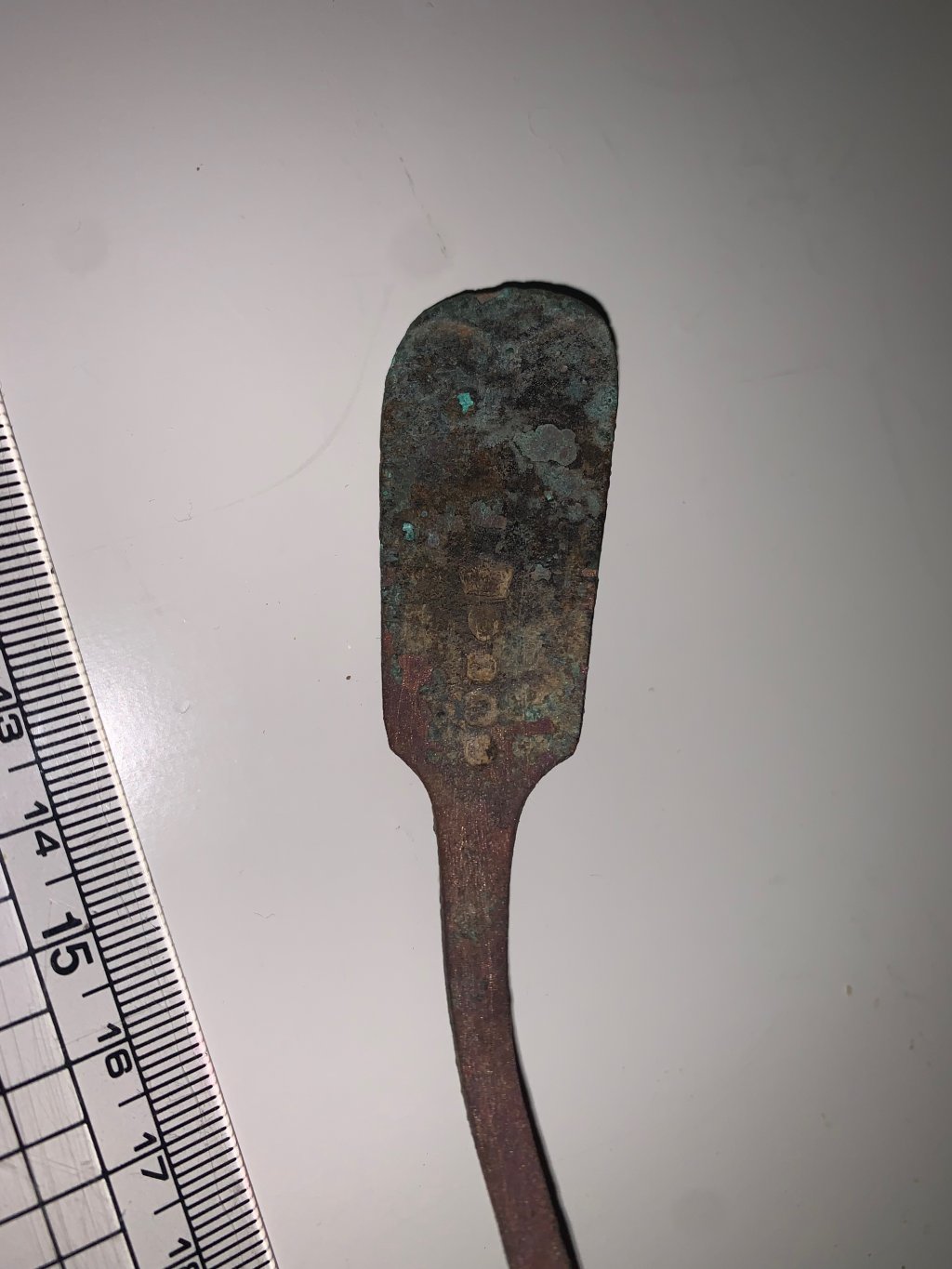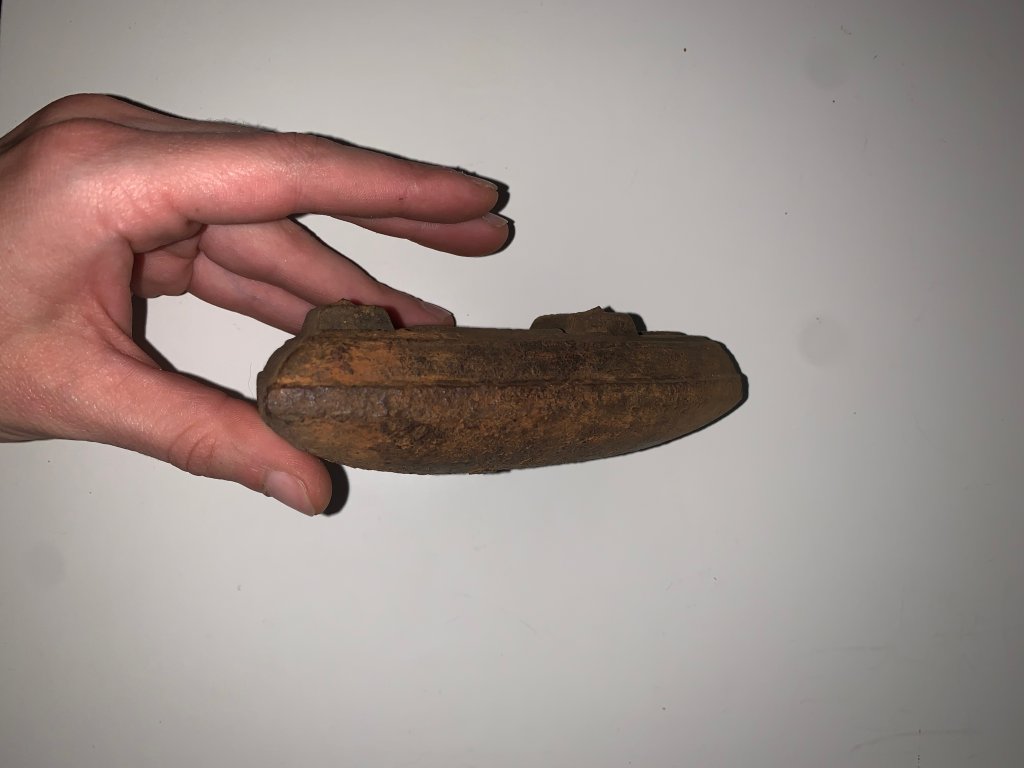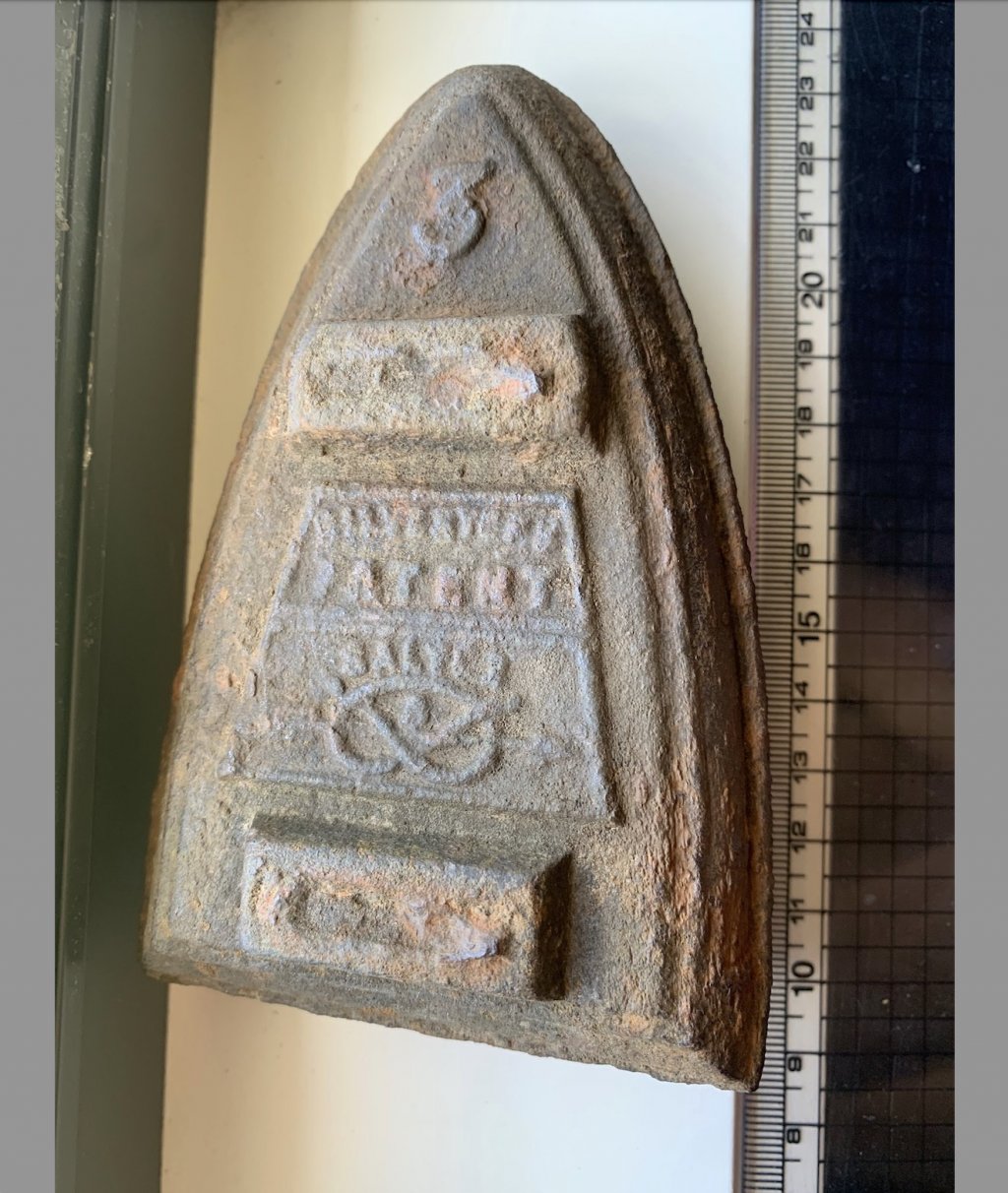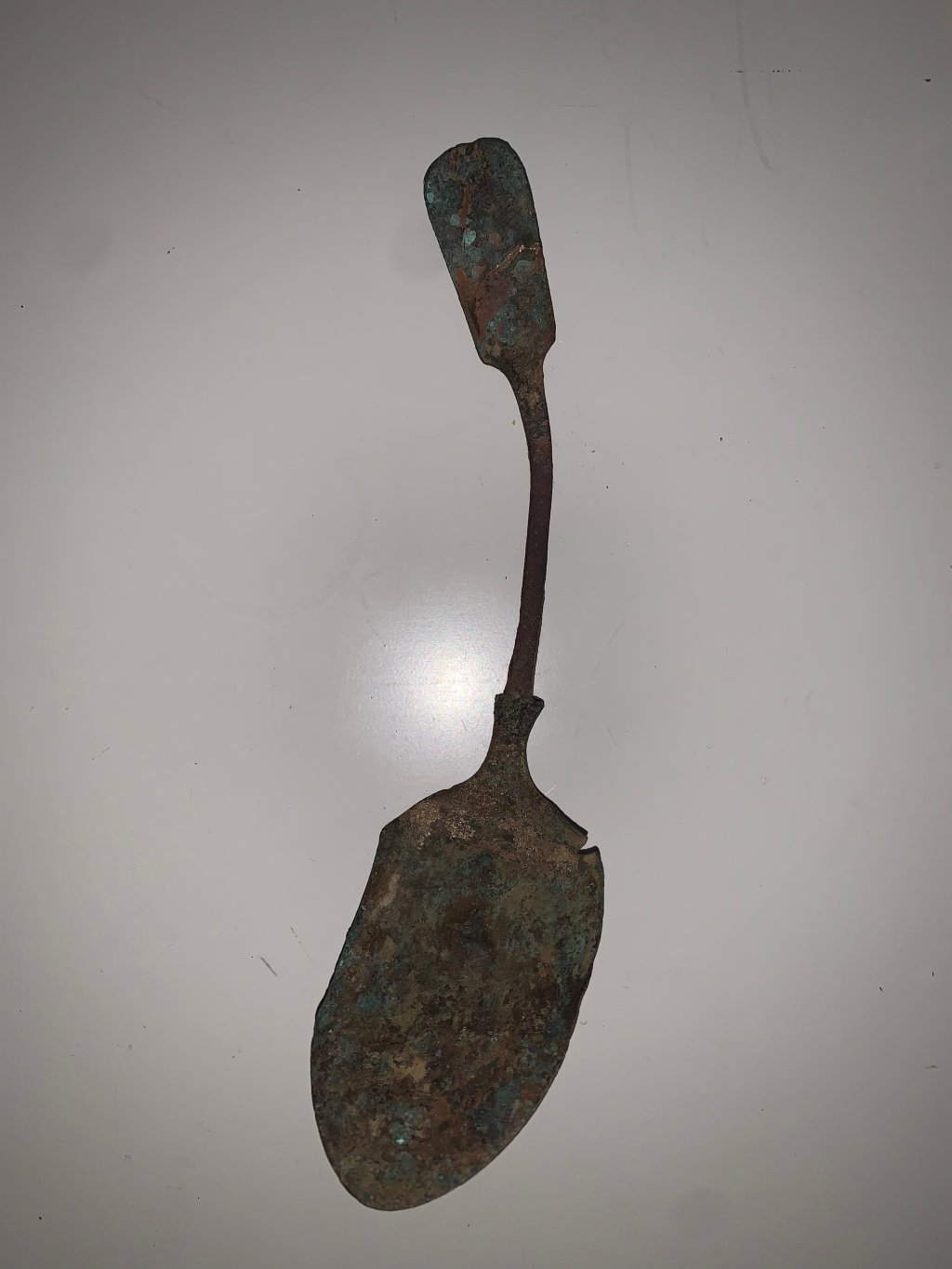Hi Nightjar, you have a silver plate spoon. English sterling usually has three typical marks. The town mark (where it was assayed), for example an anchor for Birmingham, a Crown for Sheffield etc. The sterling mark (lion passant) which looks like a lion standing sideways and the date letter which refers to the year it was made. Depending on the King or Queen in power at the time it may have their head stamped on the piece too. Plated wares often had four to five marks and the two diamond shaped ones on your spoon are a good indicator of plate. Btw, this isn't something I cut and pasted, just what I have learned on the job over the years. The other less complicated test - polish it. If after a long time all you see is a nice shiny silver spoon, it it sterling. Plated ones will always show their wear and never really get a lot better.

